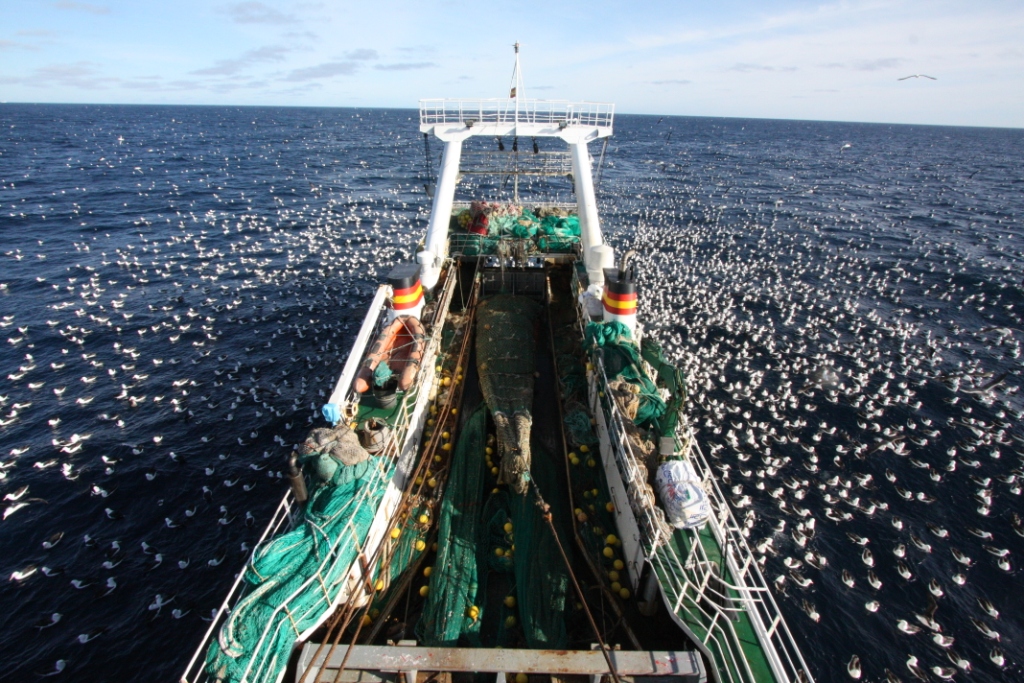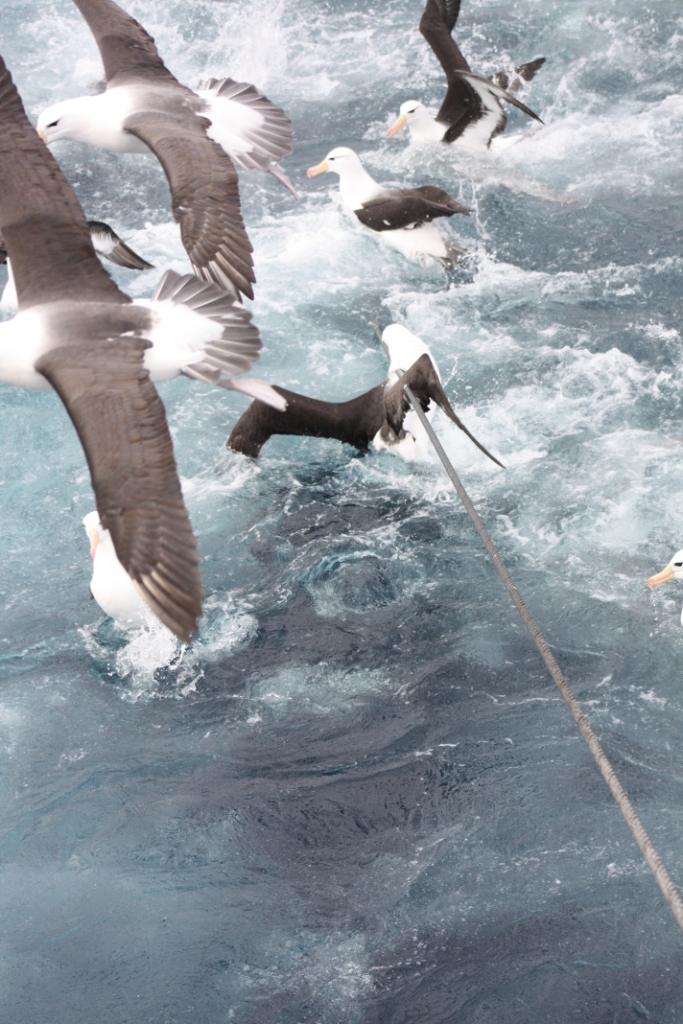Black-browed Albatrosses gather behind a trawler in the South Atlantic; photograph by Graham Parker
Amanda Kuepfer (South Atlantic Environmental Research Institute) and colleagues have published in the journal Biological Conservation on batch discarding of trawler offal as a mitigation measure to reduce seabird mortality.
The paper’s abstract follows:
“Incidental mortality in trawl fisheries is a serious threat to seabird sustainability. Driven primarily by seabirds attracted to discards, limiting discard discharge through strategic batching is a best practice mitigation measure recommended by the Agreement on the Conservation of Albatrosses and Petrels (ACAP). However, studies supporting the efficacy of batch discarding are rare, limited to the south-western Pacific, and assess seabird numbers attending vessels only, not gear contact rates. The effectiveness of batch discarding in areas with different seabird communities, fishery assemblages, and natural prey availability is therefore unknown. Here we quantify both seabird numbers and gear contact rates in response to strategic discard discharge in the Falkland Islands trawl fleet for two high-risk species groups: black-browed albatross (Thalassarche melanophris) and giant petrel species (Macronectes spp.). Specifically, we test the effect of three different discharge treatments (zero, batch and continuous discarding) at two vessels. Bird abundance and contact rates were positively related, but zero discarding consistently reduced seabird numbers attending trawlers and eliminated contacts with warp cables and tori-lines. Batching significantly reduced bird abundance and contact rates at the vessel that stored all discards between batches. At the other vessel, however, intermittent release of hashed viscera diminished the mitigation effect. Our findings validate the generality of batch discarding as an effective mitigation measure in trawl fisheries where zero discarding is not possible, whilst highlighting the importance of complete waste storage.”
A Black-browed Albatrosses collides with a trawler warp in the South Atlantic; photograph by Graham Parker
Reference:
Kuepfer, A., Sherley, R.B., Brickle, P., Arkhipkin, A. & Votier, S.C. 2022. Strategic discarding reduces seabird numbers and contact rates with trawl fishery gears in the Southwest Atlantic. Biological Conservation 266. doi.org/10.1016/j.biocon.2022.109462.
John Cooper, ACAP Information Officer, 01 February 2022

 Español
Español  English
English  Français
Français 
